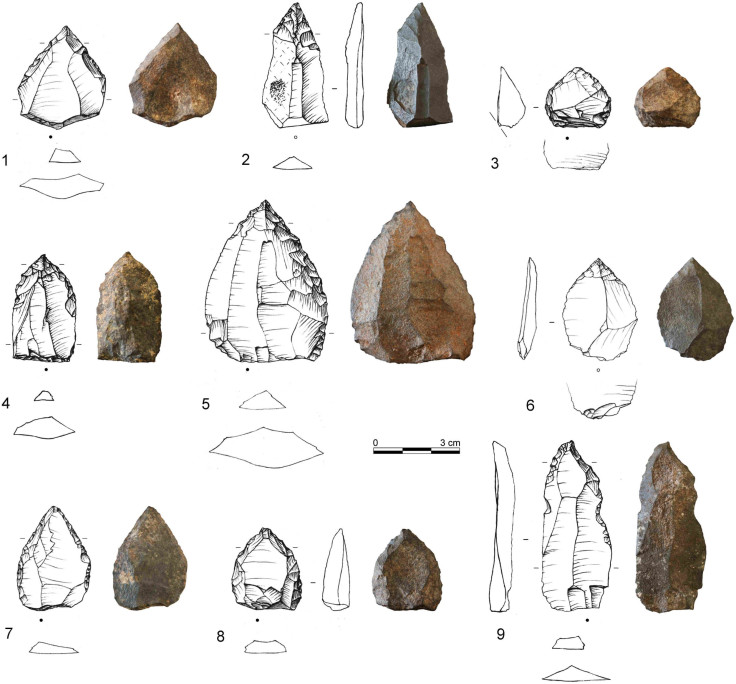Making Weapons: Middle Stone Age Man Learned To Make Serrated Edges

Humans mastered complex weapons-creating techniques much earlier than previously suspected, some 77,000 years ago, Belgium researchers say.
The researchers from the University of Liège examined 25 weapons fragments found at the Sibudu Cave site in South Africa, dating back to the Middle Stone Age, which began 300,000 years ago and heralded technological advancements for hunter-gatherer groups.
Read: New Species, Giant Shipworm, Found In Philippines
“The South African [Middle Stone Age] has become an ideal canvas for the development and elaboration of models helping us to understand the first societies of anatomically modern humans, before their dispersal on the Eurasian continent,” the researchers said.
Professor Veerle Rots at the university’s Fund for Scientific Research said humans developed the “pressure flaking” technique, giving them more control over fashioning sharp-edged weapons. The pressure flaking technique involves using a pointed bone tool to remove small flakes of rock from a sharpened stone, producing not only sharp edges but serrated edges as well.
In a study published in Plos One, the researchers said the technique was developed earlier than previously suspected, highlighting “the diversity of the technical innovations adopted by southern African [Middle Stone Age] populations.”
Read: 3D Printing Moving To Construction Sites, Making Customization Easier
“The combination of technological, wear and residue evidence allowed us to confirm that the serration was manufactured with bone compressors and that the serrated points were mounted with a composite adhesive as the tips of projectiles used in hunting activities,” an abstract of the study said.
The researchers found the Sibudu weapons in 2013 and 2014 in a cave about 9 miles from South Africa’s Indian Ocean coast, in an area protected by a rock shelter along the uThongathi River. The pressure flaking technique also has been found elsewhere, but the artifacts were more recent, as little as 20,000 years old in Europe.
The researchers said the serration was not uniform, with some of the specimens showing deep notches and others showing very shallow indentations, possibly indicating the specimens were put to different uses.
The weapons showed signs of having been attached to wooden shafts, apparently to make spears or arrows, the researchers said. Some had two sharpened edges.
Fourteen of the 25 stone weapons recovered showed evidence they had been used in hunting, indicating "specialized hunting technology was used in South Africa before 77,000 years ago," Rots told Live Science in an email.
The publication Archaeology notes stone toolmaking is considered a defining characteristic of humans but a discovery earlier this year indicated such tools predated the first known humans. A 2015 Stony Brook University study found such tools at a site in Kenya that date to 3.3 million years ago, predating Homo habilis by some 700,000 years.
Recent research indicates other primates also use stone tools. Wild bearded capuchin monkeys in Brazil break off sharp-edged stones, indicating hominids didn’t need opposable thumbs to get started as toolmakers, research published in Nature last November surmised.
"We discovered that some of the stone flakes produced accidentally by these capuchin monkeys were very similar to Oldowan stone tools," said Tiago Falótico, a researcher at the University of São Paulo's Psychology Institute and one of the study’s authors.
"When sharp-edged flakes are found at an archeological site, it's usually easier to attribute them to hominins because the same digs generally also turn up many stone cores and signs of human occupation, such as fires. However, when they're found in isolation with few or no other archeological artifacts, we should bear in mind that they might not necessarily have been produced by human ancestors."
© Copyright IBTimes 2024. All rights reserved.






















